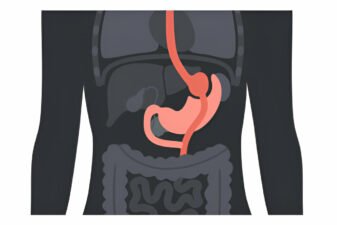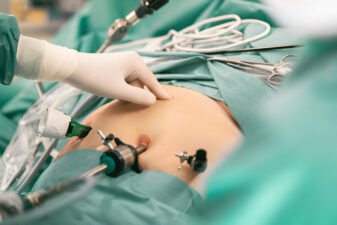Liposuction (also known as Lipoplasty, Liposculpture or Suction Lipectomy) is a serious surgical procedure to remove surplus body fat which carries all the usual risk of perioperative and post-operative health complications. That said, Liposuction – in particular tumescent lipoplasty carried out using local anesthesia – is generally very safe, and post-operative problems are commonly minor and temporary.
What is the Death Rate of Liposuction Surgery?
According to one research study (2000) of liposuction operations using general anesthesia, there were a total of 95 deaths among 475,000 patients. According to another study (2002) of plastic surgeons conducting liposuction by local anesthesia, there were no deaths among 65,000 patients. Other studies suggest that the risk of death from lipoplasty is between 20 and 100 deaths per 100,000 procedures.
Some evidence indicates that the risk of premature death due to liposuction is as low as 3 deaths for every 100,000 lipoplasty procedures. Other evidence suggests that the risk of death is between 20 and 100 deaths per 100,000 liposuction operations. Another study shows that the mortality rate is higher for liposuction when other surgical procedures (eg. plastic surgery) are also performed at the same time. Tumescent liposuction using local anesthesia minimizes the risk of death.
What are the Main Causes Death Resulting From Liposuction?
The most common causes of death from lipoplasty surgeries are: (1) Blood clot in the lung; 2) Infection; 3) Visceral Perforation Damage to Abdominal Organs (lungs, liver, intestines); 4) Drug Reactions and Side Effects of Anesthesia.
How Much Body Fat Can Be Removed By Liposuction?
Suctioning too much fat in a single session can be dangerous to health. There is a limit to the amount of surgical trauma that can safely be experienced by the human body. If the liposuction patient has a large amount of adipose tissue which needs removing, surgeons typically recommend dividing the liposuction into a series of separate surgeries spaced 4-5 weeks apart.
Health Complications Of Liposuction
Here is a brief list of possible health dangers and side-effects of liposuction surgery to remove excess body fat.
Health Risk From General Anesthesia
Giving patients a general anesthesia during liposuction can be considered safe when 1) the general anesthesia is administered by a board certified anesthesiologist, 2) liposuction is not performed at the same time as other unrelated surgeries, and 3) there is no excessive suctioning of fat. However, human error in administering or monitoring the effects of the anesthesia can (and does) cause fatalities during liposuction and many other surgical operations.
Toxicity from Local Anesthesia
Lidocaine, a skin-numbing drug, is often used as a local anesthetic during liposuction. Large volumes of liquid with lidocaine may be injected during liposuction. This can cause a degree of toxicity. Symptoms of this include: lightheadedness, drowsiness, tinnitis, slurred speech, metallic taste in the mouth, as well as numb lips and tongue, shivering, muscle twitching and convulsions. In extreme cases, lidocaine poisoning may cause cardiac arrest. However, providing lidocaine is administered correctly, it is extremely safe. All liposuction-related deaths have been linked with either the use of general anesthesia, or IV sedation, or lidocaine doses in excess of 75 mg/kg. (See: Grazer FM, de Jong RH. Fatal outcomes from liposuction: census survey of cosmetic surgeons. Plastic and Reconstructive Surgery 105:436-446, 2000).
Fluid Imbalance
This is a major concern during liposuction, as body fat (adipose tissue) contains a lot of liquid. The more fat which is suctioned or aspirated, the more fluid is lost. During the operation and immediately afterwards, liposuction patients are carefully monitored for signs of dehydration or fluid imbalance.
Infections
Infection is a normal risk of any invasive surgery, including lipoplasty. Some infections can be life threatening (eg. necrotizing fasciitis [bacteria that devours tissue], or infection caused by toxic shock syndrome). Infections following tumescent liposuction are extremely rare. Lidocaine, the local anesthetic applied during tumescent lipoplasty kills bacteria.
Edema or Swelling
Another health complication after liposuction is temporary swelling of the areas treated. This is a normal part of the post-op healing process, and usually disappears within 1-3 months. The surgical closure technique is a factor in this type of swelling. If the surgeon does not stitch the incision sites closed, it helps post-operative drainage of the site. This reduces the amount of postoperative swelling, thus minimizing any edema. (HK Pads are placed over the open incisions to absorb the fluid drainage.) If the incision sites are closed, some residual inflammatory liquid from the anesthetic may become trapped, causing additional swelling and edema.
Pulmonary Edema
Giving patients large doses of intravenous fluids during and after liposuction can cause excessive accumulation of fluid in the lungs (pulmonary edema), which can be serious – even life-threatening.
Embolism
Embolism, a blockage of an artery, is a complication which can occur after liposuction when loose fat enters a ruptured blood vessel and travels to the lungs or brain. The symptoms of pulmonary emboli (fat clots in the lungs) include shortness of breath or difficulty breathing. Any suspected embolism requires immediate medical treatment.
Visceral Perforations
Lack of clear visibility during the liposuction operation may cause the surgeon to perforate or damage internal organs with the canula or suction probe is. If organs are damaged, corrective surgery may be required. Some visceral perforations can be fatal.
Hematoma or Seroma
Hematoma (bleeding into a subcutaneous closed space), or seroma (the leakage of serum – the straw colored liquid from the blood – into closed space under the skin, are two other health complications that may arise after liposuction. Three factors which may increase the risk of such problems include: patient-obesity, excessive fat-removal with a large cannula, and ultrasonic assisted liposuction (UAL). The vasoconstriction engendered by tumescent liposuction has drastically reduced the occurrence of hematomas.
Local Pain And Numbness
Some liposuction patients experience “paresthesias” – an altered sensation at the site of the suction lipectomy. This may involve increased sensitivity or pain, or the loss of feeling, or numbness. In rare cases, such changes in sensation may be permanent. Permanent nerve damage is very rare with tumescent lipoplasty. It tends to be more common after ultrasonic assisted liposuction (UAL).
Skin Necrosis
Skin necrosis means skin death – a condition in which skin may change color and fall off, or become infected. Necrotic skin may result thermal injuries (burn or freezing), infection, or injury to local blood vessels causing a breakdown in the oxygen supply to an area of skin. Skin necrosis is a health complication which can arise after liposuction if skin is injured or burned. In rare cases, severe bacterial infection can cause necrotizing fasciitis of the skin after liposuction. This specific type of infection has been linked with UAL liposuction and with the use of Reston™ foam applied to the skin after surgery in order to reduce bruising. (Note: The manufacturer of Reston foam, 3M Corp., has advised against the use of Reston foam after liposuction, as any allergic reaction on the part of the patient to the adhesive on the foam can lead to blisters and an increased risk of necrotizing fasciitis.)
Skin Irregularities and Depressions
Another side-effect of liposuction includes the appearance of irregularities and depressions of the skin. Typically, this is caused when the physician is tired, or tries to do too much fat-aspiration in one session. The use of large cannulas increases the risk of these irregularities, and surgeons tend to use these larger instruments when performing total-body liposuctions. In general, the more fat which is liposuctioned from a particular area of the body, the greater the risk of fatty depressions (lipotrops) or fatty lumps (liponots). The expectations of patients are crucial here. The whole point of liposuction is to create a shapely body contour, not to remove the maximum amount of body fat. Liposuction is not a treatment for obesity.
Liposuction Is Not A Recommended Treatment For Obesity
Lipoplasty is not bariatric surgery. Unlike gastrointestinal reduction surgeries like Adjustable Gastric Banding or Vertical Banded Gastroplasty or Roux-en-Y-Gastric Bypass, Liposuction is a purely cosmetic procedure. Its only connection with obesity surgery is that it may be performed in conjunction with abdominoplasty or body lift type procedures to remove loose skin after massive weight loss following stomach bypass (like Biliopancreatic Diversion, or Duodenal Switch) or lapband operations. Liposuction has far fewer health complications than bariatric surgery.
For more information, see: Health Dangers of Bariatric Surgery, Health Dangers of Gastric Bypass, Weight Loss Surgery Risks And Benefits. For details of weight reduction after bariatric operations, see Does Obesity Surgery Work? and Weight Loss Surgery Results.
How To Reduce Health Complications And Side Effects After Liposuction
The prevention of health problems after lipoplasty, is a task for surgeon and patient. Surgeons can minimize the risk of health complications by screening patients and avoiding those who have unrealistic medical expectations, and a history of significant medical problems. Also they should limit the amount of fat they remove in one session and not attempt multiple unrelated surgical procedures along with liposuction. They might also make it clear to patients that while liposuction under general anesthetic is safe, liposuction performed under local anesthesia is much safer. In turn, patients should modify their expectations as to the amount of fat they require to be removed and not insist on multiple procedures. It’s worth remembering that liposuction success depends on the fat that remains, not the fat that is suctioned.










